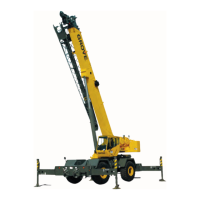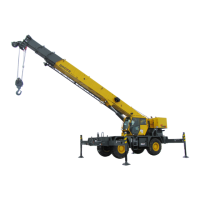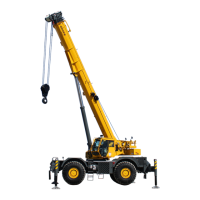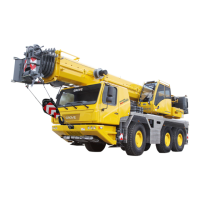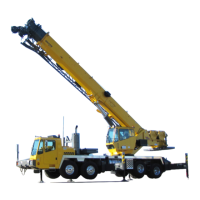ENGINE AND ENGINE SYSTEMS CD3340B/YB4411
6-2
Published 04/07/2015 Control # 569-00
Do not use “break-in” lubricating oils in new or rebuilt
engines. Only use lubricating oils specified for normal engine
operation.
Oil Viscosity Recommendations
The use of a multigrade lubricating oil improves oil
consumption control and improves engine cranking in cold
temperatures while maintaining lubrication at high operating
temperatures. A multigrade oil is therefore recommended
with the viscosity grades shown in the following chart. The
use of single grade lubricating oils is not recommended,
except for synthetic oils used in Arctic conditions.
Viscosity Grades
Arctic Operation
NOTE: SAE 5W viscosity grade synthetic oil may be used
when operating the engine in ambient
temperatures below -23°C (-10°F) provided it
meets the minimum viscosity at 100°C (212°F).
When there is no provision to keep the engine warm when
operating in ambient temperatures consistently below -23°C
(-10°F), use a lubricating oil that meets the following
requirements:
Recommended SAE Viscosity Grades.
ENGINE COOLING SYSTEM
The engine cooling system consists of the coolant passages
in the engine, a thermostat, water pump, hoses and radiator.
The engine is cooled by the circulation of coolant through the
passages in the engine block and head. Circulation is by a
thermo-siphon action assisted by a water pump driven by a
belt from the crankshaft pulley.
The water pump bearings are packed with a special grease
during assembly and do not require attention in
maintenance.
Coolant Requirements
The quality of coolant will determine the efficiency and life of
the cooling system.
1. Check the antifreeze concentration several weeks
before the beginning of the cold season or hot season.
The antifreeze must have an ethylene glycol
(ethanediol) base. Use a low silicone antifreeze that
conforms to one of the standards below, or which
contains no more than 0.1% anhydrous alkali
metasilicate.
U.S.A. - Engineering Standard GM6038-M
U.K. - BS3151: 1959: Ethandiol antifreeze type B with
sodium nitrate inhibitors.
Australia - AS 2108-1977: Antifreeze compounds and
corrosive inhibitors for engine cooling systems.
2. There is an advantage to using antifreeze even when
frost protection is not necessary. Antifreeze protects
against corrosion and also raises the boiling point of the
coolant. A 50% concentration of antifreeze is preferred,
but if this much protection is not preferred, a 33%
concentration can be used. Never use more than a 65%
concentration under any conditions. Where frost
protection will never be required, use a non-chromate
corrosion inhibitor and clean soft water.
DO NOT USE HARD WATER in the cooling system.
Hard water, or water with high levels of calcium and
magnesium ions, encourages silica gel formations,
especially after a number of heating and cooling cycles.
These gel formations can result in loss of cooling or
heating in radiators and cab heater cores by coating and
plugging the tubes. The formations usually deposit in the
cooler sections of the cooling system, such as the
radiator bottom tank.
USE SOFT WATER, DISTILLED WATER OR
DEIONIZED WATER to reduce the potential and
severity of silicate dropouts.
NOTE: If you use water without a corrosion inhibitor, rust
will form and plug the small holes in the head
Parameter
(Test Method)
Specification
Performance API Classification CF-4,
CH-4, CI-4, or CJ-4-
Turbocharged
Viscosity 10,000 mPa°s maximum at
-35°C (-31°F) 4.1mm (0.16
in) Squared Minimum at
100°C (212°F)
Pour Point (ASTM D-97) Maximum at 5°C (41°F)
Below the Lowest
Expected Ambient
Temperature
Sulfated Ash Content Maximum of 1.85% by
weight (ASTM D-874)
15W40 or
20W40 -10°C (+14°F) and above
10W30 -23° to -10°C (-10° to +14°F)
Synthetic Oil Below -23°C (-10°F) - See Arctic
Operation
Reference Only
